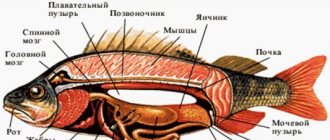Lessons on ecology
Create your teacher website PC and PPC courses Video lessons Olympiad Webinars for teachers
- home
- Ecology
- Lessons
Watch and download free lessons, tests, notes, presentations and other useful materials on ecology for teachers and students. In this section you can get lessons on ecology .
- All 453
- Lessons 81
- Presentations 80
- Tests 14
- Planning 22
- Events 92
- Other 164
- All classes
- For preschoolers
- 1 class
- 2nd grade
- 3rd grade
- 4th grade
- 5th grade
- 6th grade
- 7th grade
- 8th grade
- 9th grade
- Grade 10
- Grade 11
| Eco-huyeler. Ortanyn ecology factors: biotical, abiotic 7 synypka arnalgan sabak zhospary. Ekozhuye tarauyn arnalgan. Sonymen qatar kosymsha bіlіm take ұyimdaryn and koldanuga more. ... 11/12/2021 Zhangalieva Saltanat Khairbulatovna 98 0 |
| Scientific article: ECOPOLITICS AND THE ESSENCE OF ENVIRONMENTAL SAFETY Since the first days of independence, the Republic of Uzbekistan has been building a democratic rule-of-law state and an open civil society that ensures compliance… 02/03/2022 Ziyodullaev Bakhriddin Mardonovich 4 0 |
| Scientific article: ECOLOGICAL PROBLEMS OF UZBEKISTAN, a new approach to the problem of preparing fluoride gas absorbers for industrial production, based on the rational use of... 02/03/2022 Amonov Tukhtamurod Yangiboy coals 3 0 |
| Ecological trail of the Samara region. Ecotourism. During the lesson, the concepts of “ecotourism”, “volunteering”, “environmental activities” are formed; The algorithm for performing the experiment is being worked out. Through the study of... 12/13/2021 Tabunkova Elena Viktorovna 32 0 |
| Toptagy mindetter Bagdarlama zhospary: Zhayau tourism equipmentsymen tactics Dog takkyryby: Toptagy mindetter Dog maksattary: Bilіmdіlіk: 01/25/2022 Askarov Maulen Tilekuly 16 0 |
| Pesticideterdin qorshagan orta men adam densaulygyna aseri Sabak zhosparynda pesticideterdin qorshagan ortaga zhane adam aғasyna tigizetіn aserіn tүsіndіredi. Sabakta әrtүrlі adіs tәsilder koldanylғa… 11/12/2021 Zhangalieva Saltanat Khairbulatovna 123 0 |
| Ecological succession 7 sons okushylvryna arnalgan sabak zhospary.arturli adis tasilder koldanyp zhazylgan… 11/12/2021 Zhangalieva Saltanat Khairbulatovna 119 0 |
| “Golden Autumn” Expand children’s understanding of autumn changes in nature. Show objects of the ecological trail in the autumn. Strengthen children’s knowledge about trees…. 09.19.2021 Shapkina Svetlana Yurievna 119 0 |
Lesson on the topic: “Global environmental problems” Presentation for a lesson on the topic: “Global environmental problems”… 10.11.2021 Osipova Yulia Aleksandrovna 202 3 |
| Lesson press conference on geology “Pearl of Siberia - sacred Baikal” Lesson press conference on geology “Pearl of Siberia - sacred Baikal” Objectives: deepen and expand students’ knowledge on this topic, develop cognitive interest, creative… 06/26/2021 Tatyana Gennadievna Shevchenko 165 1 |
| “What is nature” expands to replenish and clarify children’s knowledge about nature, revealing the relationship between natural objects... 04/18/2021 Shapkina Svetlana Yurievna 191 2 |
| “Nature is our home” consolidates knowledge about natural objects of animate and inanimate nature. Form the foundations of ecological culture... 04/18/2021 Shapkina Svetlana Yurievna 210 0 |
| Plan - Summary of the lesson "Wild and domestic - all so important" in the discipline "World of Ecology" Plan - Summary of the lesson in the discipline "World of Ecology". Topic: “Wild and domestic - all so important”... 03/16/2021 Trushina Tatyana Pavlovna 356 5 |
| Teaching is my work. Lesson “Self-Knowledge” Topic: “Teaching is my work” Lesson objectives: to promote the development of interest in the subject “Self-Knowledge” as an academic subject. ... 10/22/2020 Shimeeva Rakhiya Lyuchirovna 187 0 |
| Plan - Lesson summary: “Visiting Milk.” Association: “World of Ecology” Lesson notes for the additional general development program “World of Ecology”... 03/16/2021 Tatyana Pavlovna Trushina 256 4 |
| “Plants are our home doctor” Lesson notes for the additional general development program “World of Ecology”, “Plants are our home doctor”... 03/18/2021 Trushina Tatyana Pavlovna 234 1 |
| Lesson notes for the additional general development program “World of Ecology”, “Forest Floors” Lesson notes for the additional general development program “World of Ecology”, “Forest Floors”... 03/18/2021 Trushina Tatyana Pavlovna 300 5 |
| Plan - Summary of the lesson “The language of flowers and flowers - weather forecasters”. Plan—Lesson notes for the discipline “World of Ecology.” Topic: “The language of flowers and flowers - weather forecasters”…. 03/16/2021 Trushina Tatyana Pavlovna 328 1 |
| Plan – lesson notes: “Indoor plants and caring for them” Plan – Lesson notes for the discipline “World of Ecology”. Topic: “Indoor plants and their care”…. 03/16/2021 Trushina Tatyana Pavlovna 505 3 |
| “The Country of Vitamins” Formation of beliefs and habits of a healthy lifestyle. Development of children’s cognitive and creative abilities… 11.11.2020 Shapkina Svetlana Yurievna 221 0 |
- ← Back
- Continue →
Ecology: lecture notes
The word “ecology” has now become widely known and commonly used. At the beginning of the twentieth century, only biologists knew him. In the second half of the 20th century, when the global crisis broke out, an environmental movement arose, which became increasingly widespread. The subject “ecology” began to be introduced into secondary and higher schools for students of natural sciences and humanities. At the turn of the 3rd millennium, this concept reached the highest political level, and the ecological imperative began to influence the development of material production and spiritual culture.
In the literal sense, the word “ecology” means “the science of the home” (from the Greek “oikos” - dwelling, habitat). The term “ecology” was proposed by the German zoologist E. Haeckel in the 19th century, but ecology as a science arose at the beginning of the 20th century, and this word came into widespread use in the 60s, when they began to talk about the ecological crisis as a crisis in the relationship between man and the environment his habitat.
As part of the biological cycle, ecology is the science of the habitat of living beings, their relationship with the environment,
one can also say
- the science of the fundamentals of rational environmental management and environmental protection.
Ecology studies the organization and functioning of supraorganismal systems at various levels, up to the global level, i.e., the biosphere as a whole.
It is necessary to note the enormous influence of chemical processes on the organization and functioning of various systems. Therefore, we can talk about environmental chemistry - the science of general chemical processes and interactions in the environment (ecosphere) and the consequences of such interactions
.
The idea that the technical power of mankind is comparable in scale to natural geological processes and changes the entire face of the Earth, its nature, was clearly expressed at the end of the 19th century. Russian philosopher and naturalist V.I. Vernadsky. He introduced the term “biosphere” into wide scientific use, meaning not only “living matter”, but also the entire environment where this substance is located, and predicted the development paths of the biosphere.
Humanity is steadily growing in numbers, increasing the extraction and processing of fossil raw materials, and has become the main disruptor of natural balances. However, until a certain time, nature managed to heal its wounds, incorporate discarded industrial waste into natural cycles, and destroy this waste.
Since the mid-twentieth century, scientists in the most developed countries of the world, where disturbances in the biosphere became especially noticeable, began to oppose the then trends in the development of technological progress. Frightening works began to appear, where the “limits to growth” of industry and agriculture were substantiated. From about this time, various sections of ecology began to receive increasing attention; environmental problems began to be solved at the state, and some at the international level. Therefore, the need to talk about the influence and regulation of human activity on the biosphere is becoming increasingly urgent. And this is helped by the development of such a science as chemical ecology.
Chemical ecology is a branch of ecology that studies the consequences of direct and side effects of chemicals on the environment and possible ways to reduce their negative impact.
Those. chemical ecology - studies a variety of chemical processes in the environment, natural cycles of substances and the influence of human activities on them, chemical methods and means of protecting the environment.
True, this term has other meanings : in English-language literature, chemical ecology is understood as the study of chemical interactions between species in an ecosystem (en: Chemical ecology), in Russian-language literature it is called ecological chemistry.
The role of chemical ecology in the general system of environmental knowledge and environmental activities is very large for several reasons.
Firstly
, among the factors that disrupt natural balances, chemicals of various origins (most often anthropogenic) are of paramount importance.
Secondly
, chemical factors are more noticeable and easier to analyze than, for example, changes of a biological or geographical nature. They formed the basis for many of Vernadsky’s works.
Third
, chemical methods and means (chemical technology) play a leading role in environmental protection.
Such examples indicate the scale of chemical changes. Annual carbon dioxide emissions now amount to ~200 billion tons. This value exceeds the ability of the World Ocean to absorb it (the ocean absorbs CO2 quite slowly), which causes an increase in the concentration of CO2 in the Earth’s atmosphere and a gradual warming of the planet’s climate. The greenhouse effect predicted by scientists is now manifesting itself very clearly.
The widespread use of freons (freons) - the simplest chlorofluorocarbons (propellants for aerosols, refrigeration liquids) - has led to the appearance of “ozone holes,” i.e., to a thinning of the ozone layer of the atmosphere, and an increased risk of skin diseases. And there are many such examples.
Basic concepts of ecology: population
, community,
ecological niche
(habitat),
ecosystem
.
A population (from the Latin populus - people) is a group of organisms belonging to the same species and occupying a certain area called habitat
.
Community, or biocenosis
, is a collection of plants and animals inhabiting a habitat area.
The set of conditions necessary for the existence of populations is called an ecological niche
. The ecological niche determines the position of a species in food chains.
The totality of a community and environment is called an ecological system, or biogeocenosis
.
The term “ecosystem” was introduced by the English ecologist A. Tansley in 1935. In 1944, V. N. Sukachev proposed the term “biogeocenosis”, and V. I. Vernadsky used the concept of “bio-inert body”. The main significance of these concepts is that they emphasize the mandatory presence of relationships, interdependence and cause-and-effect relationships, in other words, the unification of components into a functional whole. An example of an ecosystem is a lake, forest, etc.
The entire biosphere can be viewed as a collection of ecosystems, from the ocean, which is dominated by small organisms but has a high biomass density, to a tall forest with large trees but a lower overall biomass density.
There are two approaches to the study of an ecological system: analytical, when individual parts of the system are studied, and synthetic, which considers the entire system as a whole. Both approaches complement each other. Depending on the nature of nutrition in the ecosystem, a nutrition pyramid is built, consisting of several trophic (from the Greek “trophe” - nutrition) levels. The lowest is occupied by autotrophic
(literally: self-feeding) organisms characterized by the fixation of light energy and the use of simple inorganic compounds for the synthesis of complex organic substances. This level includes, first of all, plants. At a higher level are heterotrophic (literally: feeding on others) organisms that use plant biomass for food, which are characterized by the utilization, restructuring and decomposition of complex substances. Then come the second-order heterotrophs, which feed on first-order heterotrophs, i.e., animals. The ecological pyramid, or nutrition pyramid, is well remembered from school biology lessons.
In general, the ecosystem consists of three non-living and three living components:
1) inorganic substances (nitrogen, carbon dioxide, water, etc.) included in natural cycles;
2) organic compounds (proteins, carbohydrates, etc.);
3) climate regime (temperature, light, humidity and other physical factors);
4) producers
(autotrophic organisms, mainly green plants, which create food from simple inorganic substances);
5) macro consumers
– heterotrophic organisms, mainly animals that eat other organisms;
6) micro consumers
, or
decomposers
, are heterotrophic organisms, mainly bacteria and fungi, “which destroy complex compounds of dead protoplasm, absorb some decomposition products and release inorganic nutrients suitable for use by producers, as well as organic substances that can serve as sources of energy, inhibitors or stimulants for other biotic components of the ecosystem."
The interaction of autotrophic and heterotrophic components is one of the most common characteristics of an ecosystem, although often these organisms are separated in space, arranged in the form of tiers: autotrophic metabolism occurs most intensively in the upper tier - the “green belt”, where light energy is most available, and heterotrophic metabolism predominates Below, in soils and sediments, there is a “brown belt” in which organic matter accumulates.
Ecology has shown that the living world is not a simple collection of creatures, but a single system cemented by many food chains and other interactions. Each organism can exist only under the condition of constant close connection with the environment. The intensity of metabolism in an ecosystem and its relative stability are determined to a large extent by the flow of solar energy and the movement of chemicals.
Individual organisms are not only adapted to the physical environment, but also, through their joint action within the ecosystem, adapt the geochemical environment to their biological needs. Entire islands are built from simple substances contained in the sea, as a result of the activity of animals (corals, etc.) and plants. The composition of the atmosphere is also regulated by organisms.
Photosynthesis plays a major role in the creation of atmospheric oxygen and organic substances, which proceeds according to the following scheme:
carbon dioxide + water + solar energy (in the presence of chlorophyll-related enzymes) = glucose + oxygen.
This process of converting some of the sun's energy into organic matter through photosynthesis is called "green plant work." In this way, not only carbohydrates (glucose) are produced, but also amino acids, proteins and other vital compounds.
The three functions of the community as a whole - production, consumption and decomposition - are closely related to each other. Considering microorganisms to be “primitive”, a person cannot exist without microbes. “Decomposition ... occurs due to energy transformations in the body and between them. This process is absolutely necessary for life, since without it all nutrients would be bound in dead bodies and no new life could arise... However, the heterotrophic population of the biosphere consists of a large number of species, which, acting together, produce complete decomposition.” The most stable decomposition product is humus, which is necessary for plant growth.
Balance of production and decomposition is the main condition for the existence of all living things in the biosphere. The lag in the utilization of substances produced by autotrophs not only ensures the construction of biological structures, but also determines the existence of oxygen a. As a result, the content of carbon dioxide in the atmosphere increases, which, like glass, absorbs infrared radiation emitted by the earth's surface, creating the so-called greenhouse effect. People find themselves, as it were, in a giant greenhouse with all the ensuing consequences for the global climate.
“The average global temperature of the atmosphere at the Earth’s surface is about 15 oC. Over the last 1 million years, it has varied within the range of 5 °C cooling and 2 °C warming. If the average global temperature changes by 10 °C, i.e. 1.5 times from the current level, the action of the Le Chatelier-Brown principle will most likely be completely disrupted - the biota will, as it were, “eat” itself, as metabolic processes intensify , will lead not to resistance to changes in the environment surrounding the biota, but to rapid self-destruction of the biosphere” (N.F. Reimers. Hopes for the survival of humanity: conceptual ecology. M., 1992, p. 63). Potential dangers of this process are the melting of polar ice and the establishment of a tropical climate throughout the Earth.
All this indicates how important it is to take into account the subtle mechanisms of the biosphere - a “machine” that must be known and, at least, not interfere with its work.
Ecosystems, like organisms and populations, are capable of self-regulation, resisting change and maintaining a state of equilibrium. But in order for these mechanisms to function normally, a period of evolutionary adaptation to environmental conditions is necessary, which is called adaptation. The activity of modern man is such that changes occur faster than nature is capable of evolving.
Unlike energy, which, once used by an organism, turns into heat and is lost to the ecosystem, substances circulate in the biosphere, which is called biogeochemical cycles. Of the more than ninety elements found in nature, about forty are needed by living organisms. The most important for them and required in large quantities: carbon, hydrogen, oxygen, nitrogen. Oxygen enters the atmosphere as a result of photosynthesis and is consumed by organisms during respiration. Nitrogen is removed from the atmosphere by the activity of nitrogen-fixing bacteria and returned to it by other bacteria, etc.
The cycles of elements and substances are carried out due to self-regulating processes in which all components of ecosystems participate. These processes are waste-free. There is nothing useless or harmful in nature; Even volcanic eruptions have benefits, since the necessary elements, such as nitrogen, are released into the air with volcanic gases.
There is a law of global closure of the biogeochemical cycle in the biosphere, which operates at all stages of its development, as well as the rule of increasing closure of the biogeochemical cycle during succession [1]
.
In the process of biosphere evolution, the role of the biological component in closing the biogeochemical cycle increases. Humans have an even greater role in the biogeochemical cycle. But his role is carried out in the opposite direction. Man disrupts the existing cycles of substances, and this manifests his geological power, destructive, today, in relation to the biosphere.
At the chemical level, the contribution of human activity to natural processes is especially clear, at the level of the mechanisms being studied. At the present stage of development, anthropogenic factors in the cycle of many substances, including those toxic to humans, are comparable to natural ones, and sometimes even exceed them.
An important aspect of human impact on the environment is the emergence of new substances, often also toxic. Currently, more than 10 million artificial compounds are known, approximately 120 thousand are in use and about 10 thousand are produced in quantities of more than 500 kg/year. of xenobiotics circulate in the biosphere
with high toxicity, and sometimes even supertoxicants (for them the maximum permissible concentration does not make sense - they are dangerous at any concentration). In addition, the transformation of chemical compounds in the environment can lead to the formation of new substances of varying degrees of toxicity and, therefore, complicate the environmental situation. As a result of all these processes, organisms encounter previously unknown factors (for example, compounds with a C-Cl bond), with the concentration of previously dispersed elements.
It is necessary to roughly separate chemical compounds used in living nature (for communication between organisms and coming from organisms into the environment) and environmental substances of both natural and anthropogenic origin.
In every biogeochemical cycle
There are two element funds: reserve and exchange (movable).
Reserve - a large mass of slowly moving substances containing a given element in a composition that is mainly abiotic
component. The fund is located outside living organisms - in the external environment.
Exchangeable (mobile) - a smaller mass of matter (compared to the mass of the reserve fund), which is characterized by rapid exchange between organisms and their immediate environment.
Sometimes the reserve fund is called the "unavailable" fund, and the actively circulating fund is called the "available" fund.
If we talk about the biosphere as a whole, biogeochemical cycles can be divided into two main types: the circulation of gaseous substances with a reserve fund in the atmosphere
or
hydrosphere
(water resources) and the sedimentary cycle with a reserve fund in the earth's crust. The division of biogeochemical cycles into cycles of gaseous substances and sedimentary cycles is based on the fact that some cycles, for example those involving carbon, nitrogen and oxygen, due to the presence of large atmospheric or oceanic (or both) funds, quite quickly compensate for various disturbances . For example, excess CO2 that has accumulated in a location due to increased oxidation or combustion is usually quickly dissipated by atmospheric currents. In addition, the increased formation of carbon dioxide is compensated by its consumption by plants and its conversion into carbonates in the seas. Therefore, the cycles of gaseous substances with their huge atmospheric funds can be considered well “buffered” on a global scale, because their ability to return to their original state is great.
Self-control of cycles with a reserve fund in the lithosphere is difficult - they are easily disrupted as a result of local fluctuations, which is associated with the low mobility of the reserve fund. The phenomenon of “buffering” is not expressed in this case.
Cycles operate under the influence of biological and geological factors. The existence of biogeochemical cycles creates the opportunity for self-regulation of the system, which gives it, to a certain extent, stability - a constant quantitative composition of the various chemical elements in it.
In connection with the economic activities of mankind and the involvement of a huge number of man-made products of this activity in the environment, problems arise due to the disruption of natural biogeochemical cycles. These disturbances are associated both with a change in the balance in the cycles and with the emergence of new chemical compounds that were previously absent in natural processes. Thus, the cycles of some elements (for example, nitrogen, sulfur, phosphorus, potassium, heavy metals) have now become natural-anthropogenic, characterized by significant openness, which leads to their accumulation and, accordingly, to a change in their impact on ecosystems.
The dispersion of industrial emissions in the atmosphere or hydrosphere does not completely eliminate pollution problems. Currently, this rather leads to the transfer of pollution to other areas. Cross-border transfer
pollution leads to the expansion of environmentally problematic areas, globalizing the environmental crisis.
Most of the pollution is released into the atmosphere and hydrosphere, and through them affects the lithosphere.









